It is a dreary mid-winter’s day at the Orrock aggregates quarry in Fife in eastern Scotland. Steep, jagged cliffs loom over cacophonous machines that grind up an endless stream of freshly mined rock. A burly man in muddy hi-vis workwear picks up a handful of black dust from a nearby mound. This is basalt dust, a waste by-product of the quarry, I am told – and despite its incongruous surroundings, it is the basis of one of the most exciting climate solutions going right now.
The basalt dust is the feedstock for a novel, nature-based carbon removal technology called enhanced rock weathering (ERW), which is designed to permanently lock away CO2 from the atmosphere. It is a geological process that has happened naturally for millions of years, but a handful of companies are now speeding it up.

Discover B2B Marketing That Performs
Combine business intelligence and editorial excellence to reach engaged professionals across 36 leading media platforms.
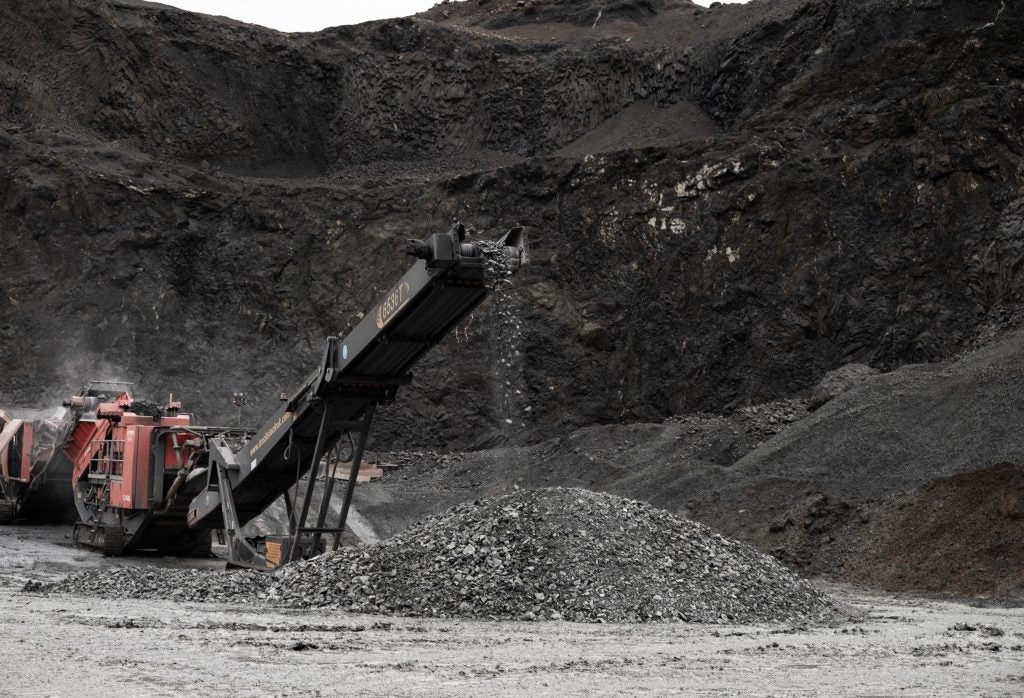
“All over the world, there is incredible momentum growing behind enhanced rock weathering and how it can be applied to a whole array of different value chains,” says Antti Vihavainen, CEO of carbon removal platform Puro.earth.
Rock weathering on steroids
To combat the pernicious effects of climate change, there is a need to remove some of the billions of tonnes of CO2 we have been spewing into the atmosphere for decades. The problem with CO2 is that it hangs about for hundreds of years, so even if all nations managed to reduce their greenhouse gas emissions to zero today, the planet would not cool down, it would just stop warming up. The Intergovernmental Panel on Climate Change (IPCC) estimates that we must remove ten billion tonnes of CO2 a year by 2050, and 20 billion tonnes annually from then on, to avoid dangerous climate change.
To do this, there is an emerging gamut of carbon removal technologies – from the simple concept of growing trees to giant fans that suck CO2 directly from the air – that scientists and policymakers are banking on to remove CO2 from the atmosphere and lock it away.
For millions of years, CO2 has combined with rainwater to form carbonic acids. When that falls on grasslands, forests and mountains, the CO2 interacts with the soil and rocks and mineralises into a stable carbonate form. However, such natural rock weathering typically takes hundreds of thousands of years.

US Tariffs are shifting - will you react or anticipate?
Don’t let policy changes catch you off guard. Stay proactive with real-time data and expert analysis.
By GlobalDataHaving spent years studying the nature and impact of these interactions, a growing cadre of global start-ups is now speeding up that process by spreading crushed silicate rocks on farmland, increasing the surface area of the rock and giving it immediate contact with the CO2 emitted by plant roots and soil microbes. The process is thus reduced to a matter of decades, and once complete, the CO2 is locked away for tens of thousands of years.
“There are probably around 10–15 companies doing ERW globally,” says Sebastien Dewarrat, co-founder of carbon removal B2B broker CarbonX. “UNDO is among the most established.”
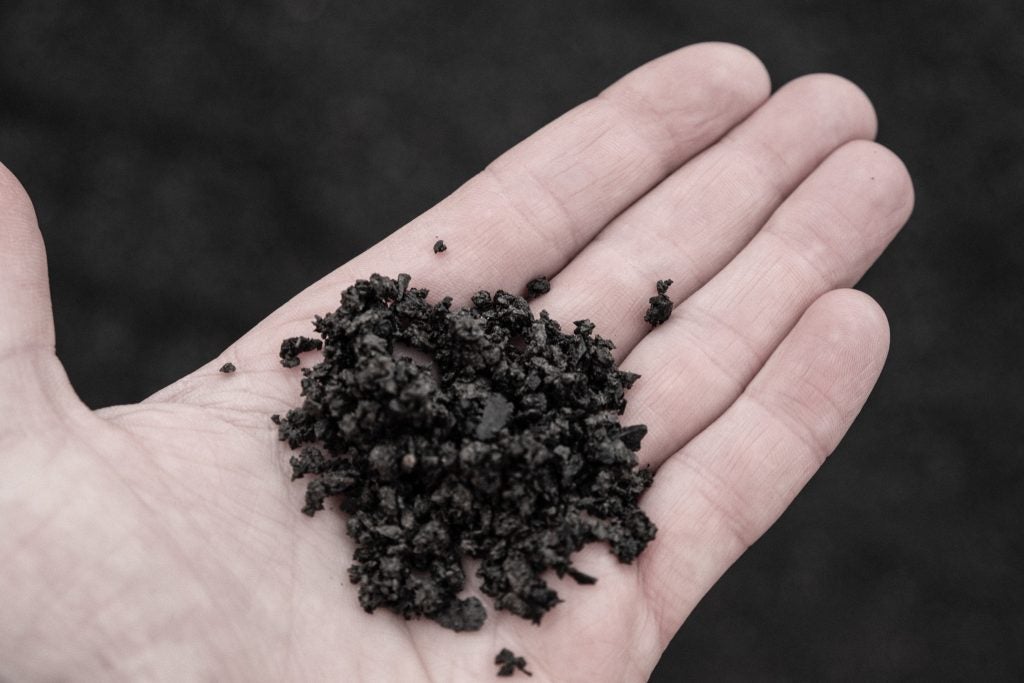
UNDO is the company showing your correspondent around this Scottish moonscape; they have settled on basalt as their feedstock for ERW. It is igneous rock that is prevalent all over the world. It also weathers quickly, thereby speeding up the CO2 sequestration, and the mountain of black basalt dust is an existing by-product of the aggregate and mining industries, so UNDO is not doing any additional mining, or using any additional energy, to procure it. Currently focusing its efforts on Scotland, England, Australia and the US, the UK-based start-up chooses areas close to existing basalt quarries to minimise the emissions and costs of transporting basalt dust from quarry to farmland.
ERW: “The most scalable carbon removal technology”
According to Puro.earth, ERW has numerous strengths as a carbon removal technology: it is hugely scalable, as suitable rocks such as basalt and olivine, and related industries for rock mining, grinding and spreading, are well-established across the world. It also has a considerable carbon sequestration volume potential – defined by Puro.earth as more than a billion tonnes per year. It can lock away carbon for more than 10,000 years with a low risk of reversal. It does not depend on global biomass feedstocks, and is therefore not susceptible to the unsustainable sourcing practices that has dogged technologies like bio-energy with carbon capture and storage (BECCS). And it can be implemented in terrestrial, coastal and aquatic environments.
According to Jim Mann, UNDO’s co-founder and CEO, the total global opportunity of ERW is up to four billion tonnes of CO2 removal a year – which would constitute 40% of the IPCC's target of ten billion tonnes by 2050. UNDO itself wants to remove a billion tonnes cumulatively by 2030.
Another of ERW’s unique selling points is the “co-benefits” it offers alongside its ability to sequester carbon. Silicate rocks like basalt are mineral-rich and act as soil enhancers when spread on agricultural land – reversing soil acidification and reducing the need for fertiliser. With deteriorating topsoil health one of the biggest challenges facing modern farming and global food security, ERW could reinvigorate farmland. “It can increase crop yield up to 40% in some cases,” says Mann. “We also think that ERW significantly reduces the nitrogen oxides emissions from agricultural land, which could also have the benefit of reducing the need for nitrogen fertiliser.” Nitrogen oxide is the third most prevalent greenhouse gas.
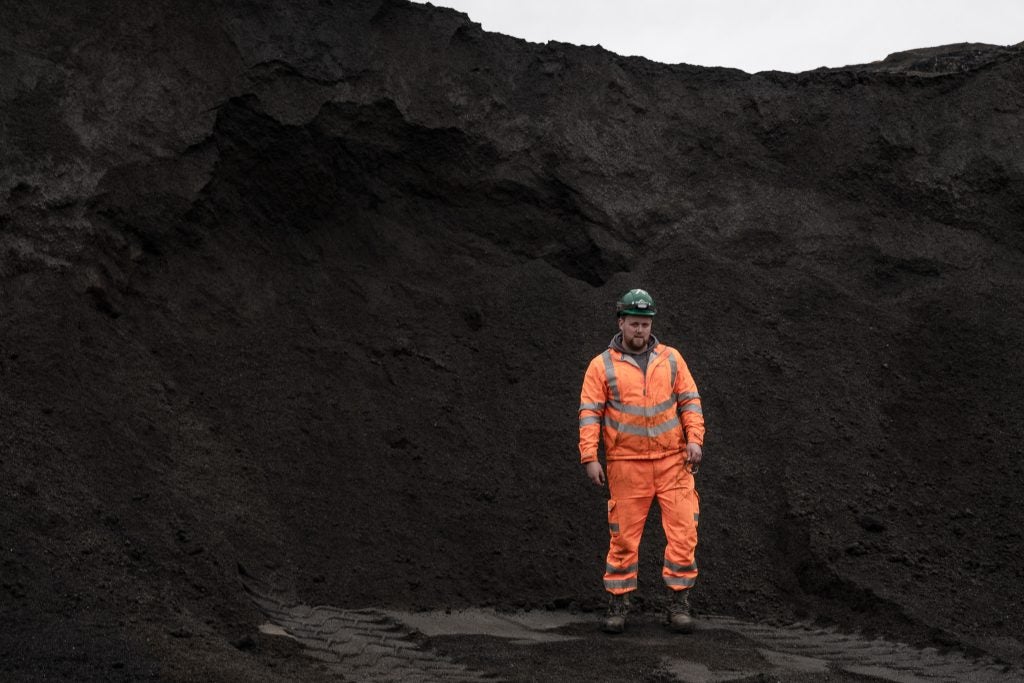
ERW also promotes ocean de-acidification. Excess CO2 in the atmosphere is causing oceans to become more acidic, threatening the health of fish and coral. ERW creates bicarbonate ions that are eventually washed out to sea and serve as a de-acidifier. Crustaceans such as lobsters and mussels use the resulting calcium carbonate to construct their shells, which eventually fall to the seabed to form carbonate rocks like limestone, locking away the CO2 for millions of years.
The carbon removal industry is typically split into 'nature-based' and 'technological' solutions. Nature-based systems such as reforestation play a vital role in preserving biodiversity, but the carbon is only locked up for the lifetime of the tree, and could be re-emitted early by wildfires, disease or logging. “Every carbon removal technology has its place, but there is confusion in the market and people aren’t doing a good job differentiating the benefits,” says Mann. “REDD+ is fantastic at preserving nature. That is the work they should be selling.”
A recent investigation into Verra, the world’s leading certifier of carbon offset credits, alleged that more than 90% of Verra’s rainforest offset credits are likely to be “phantom credits” that do not account for real carbon reductions.
By contrast, technological solutions such as direct air capture (DAC) use machinery to suck CO2 out of the air, before locking it away into new products or injecting it deep underground. The technology can offer high permanence of CO2 storage but is costly, energy-intensive and boasts few co-benefits. “DAC is great because it is measurable, but it is not very scalable,” says Mann. “[In contrast,] ERW is probably the most scalable carbon removal technology on the planet, but it is not easy to measure.”
Handle with care
Mann concedes that all options will need to play their part for the world to reach the IPCC’s carbon removal target. As Mann says, the biggest problem for ERW is quantifying how many tonnes of CO2 it has removed. “It is very early days for ERW, but I am really excited by the potential of the technology,” says Callum Hunt, a carbon specialist at carbon offset procurement platform Abatable.
However, he adds: “To justify the high of prices of these carbon credits [compared with nature-based credits], we need to have more transparency and credibility about what has actually been removed.”
For that reason, although the scientific community identified the potential of the technology decades ago, until recently it was not included in any carbon credit schemes. However, the likes of UNDO have pioneered measurement, reporting and verification methods that draw on live soil data. “We have had some scientific breakthroughs in the last six months that means we know we can quantify the carbon removed,” says Mann. “There is a margin of error of 5%, but we can predict accurately to within that range.”
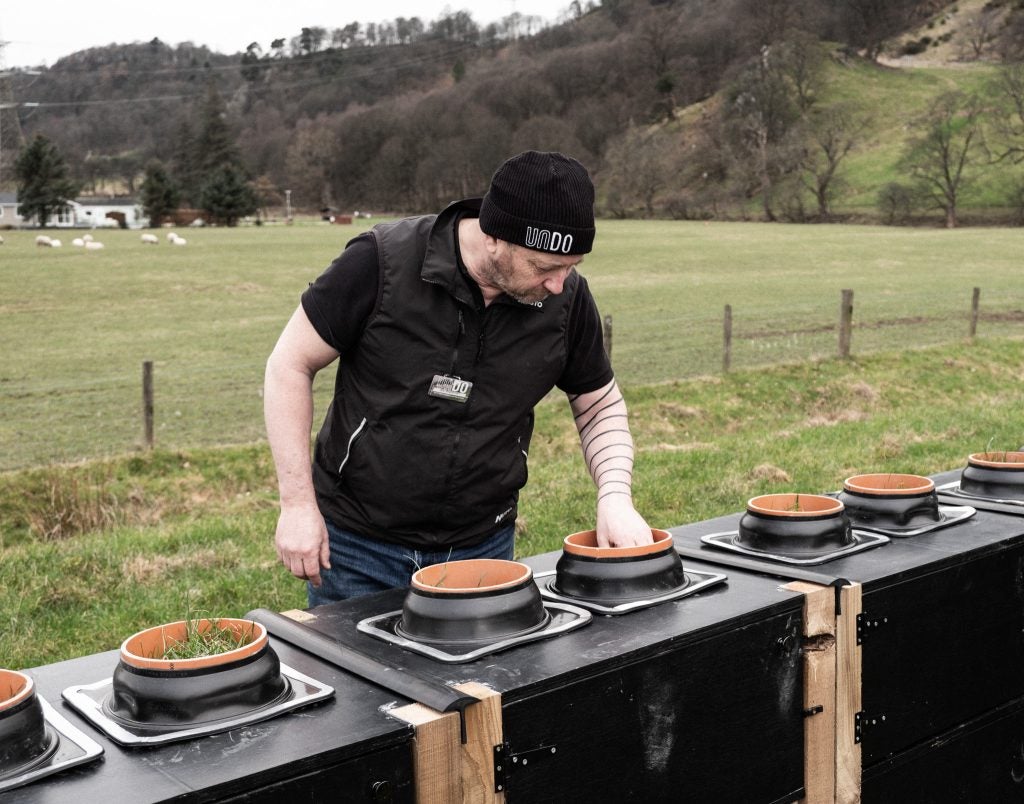
Those efforts have been sufficient for Puro.earth to launch the world's first ERW carbon crediting methodology – co-created using the latest science by a working group of carbon market experts, project developers and scientific researchers. It essentially enables companies like UNDO to monetise their carbon removal activities with Puro.earth’s CO2 Removal Certificates, or CORCs. This will ultimately allow ERW to scale up globally.
[Keep up with Energy Monitor: Subscribe to our weekly newsletter]
Nonetheless, there is also a potential downside with ERW. During the process, elements such as calcium and magnesium are released into the soil. However, depending on the individual rock chemistry and mineralogy, this can also include elements that above certain levels are considered contaminants. Once the silicon rock is applied, the process cannot be undone – so the risks must be seriously considered in advance. Nevertheless, “in Brazil, they have been spreading crushed basalt on agricultural land as a natural fertiliser for over 100 years and they haven't seen any negative side effects,” says Ryan King, UNDO’s chief commercial officer.
Finally, there is also a risk that ERW could eventually result in the opening of new quarries. Although existing mine tailings or alkaline industrial silicate minerals – such as steel slags, construction and demolition waste, or ash from biomass incineration – may be used at first, mining more rock might eventually be required for the industry to scale up enough to play its part in limiting climate change. “[But] we already quarry enough rock," says Mann. "You wouldn’t need to open new quarries to do that. You would only need to [open new quarries] to reduce logistical costs.”
Ready to rock and roll
These are all serious considerations for scaling up the ERW industry, but they do not detract from the excitement surrounding the potential of the technology – to which several recent scientific studies have attested.
A 2020 techno-economic analysis estimated the cost of using ERW on cropland at $80–180 per tonne of CO2 (/tCO2). That was extremely competitive with other high-permanence carbon removal technologies in the study, such as bio-energy with carbon capture and storage (BECCS) at $100–200/tCO2 and DAC at $100–300/tCO2.
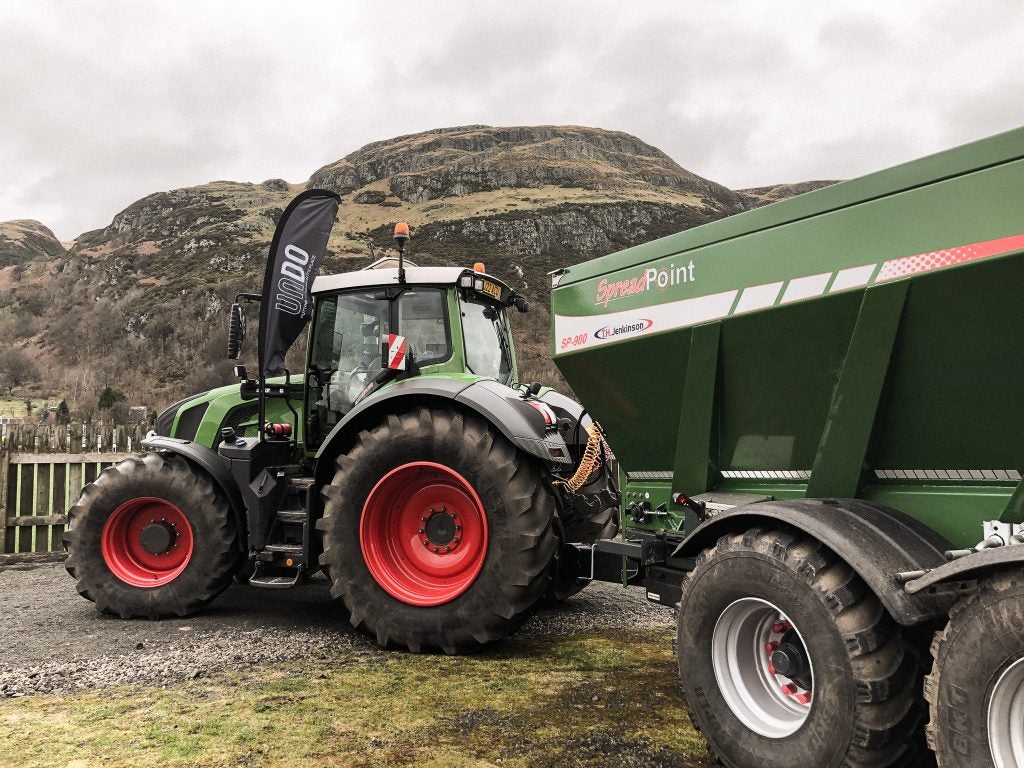
A study from May last year also found that ERW is competitive with other large-scale carbon removal strategies in terms of its energy and water demands. Modelling the potential supply chain impacts for 12 nations using ERW to deliver up to two billion tonnes of carbon removal, the researchers found that rock grinding rather than mining was the dominant influence on environmental impact. That was the case both under business-as-usual and clean energy scenarios to 2050, although transitioning to ERW using low-carbon energy systems improved the sustainability of its supply chain.
“It is pretty applicable to most conditions of agricultural land around the world, and every country has basalt – it is one of the most available minerals on the world’s surface,” says Mann. “The limiting factor really is how close agricultural land is to the quarry to make it practical to spread the rock there.”
“We will draw a line 50 miles around each quarry and that is where we will spread – the further away you go, the more emissions and cost it takes to get the rock there,” adds King.
Although there is limited scientific research on the global carbon removal potential capacity of the technology, one study from April last year found that using ERW on croplands across the UK could deliver net carbon removal of 6–30 million tonnes of CO2 per year by 2050 – representing up to 45% of the carbon removal required nationally to reach net-zero emissions.
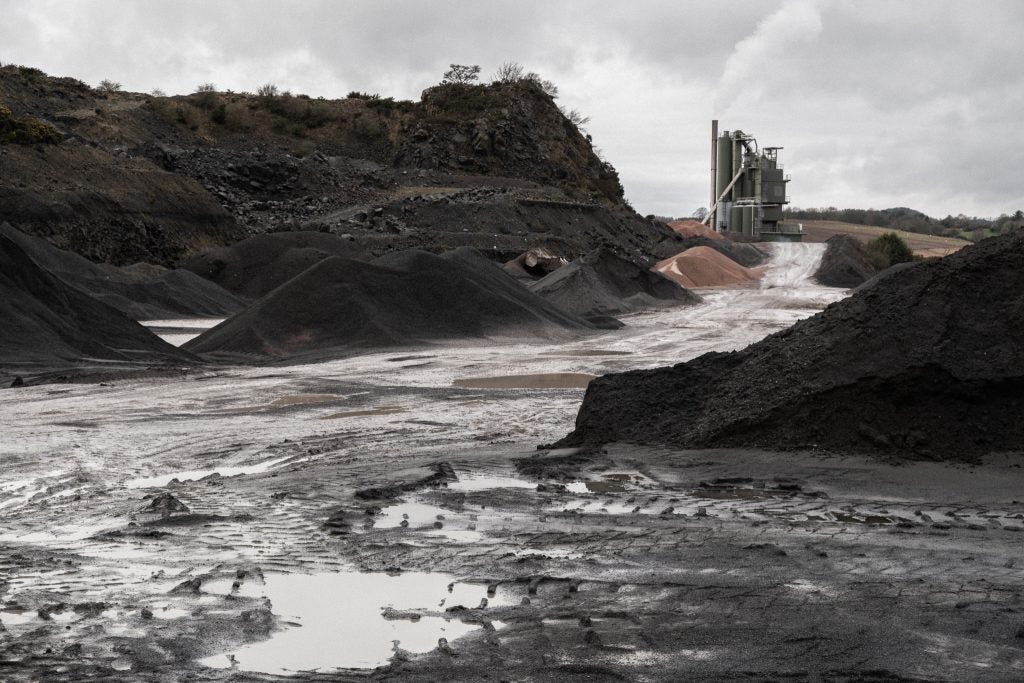
Academic research indicates that the technology could play a key role in national climate mitigation strategies if it were to gain widespread acceptance at the political and community levels. That just leaves the small task of growing the industry fast enough to make a discernible dent in the world’s vast atmospheric CO2 stockpile by 2050.
“In theory, it is definitely possible to reach billions of tonnes of CO2 removal with ERW,” says Dewarrat, “but that would make it a trillion-dollar market, and the infrastructure requirements around that would be massive.”





